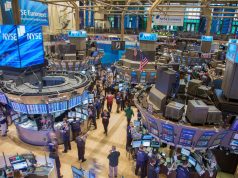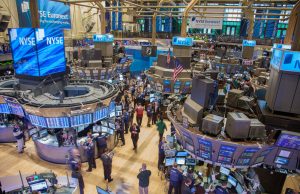Nvidia CEO Jensen Huang recently made a prediction that could reshape how investors think about the artificial intelligence boom. Speaking on the company’s latest earnings call, Huang forecasted that data center operators will spend up to $4 trillion on AI infrastructure between now and 2030. For context, that’s more than double the annual GDP of most developed countries, deployed over just five years.
While Nvidia has already become the world’s largest company with a $4.2 trillion market cap following an extraordinary 1,100% rally since early 2023, Huang’s comments suggest we may still be in the early innings of this transformation.
Why This Infrastructure Spending Wave Is Different
The driving force behind this massive capital deployment isn’t simply about upgrading existing technology. The latest AI reasoning models have fundamentally changed computational requirements in ways that make previous hardware almost obsolete. According to Huang, these new reasoning models consume up to a thousand times more processing power than traditional large language models.
This isn’t hyperbole. OpenAI’s latest GPT-5 and Anthropic’s Claude 4 represent a new generation of AI that spends significantly more time “thinking” before generating outputs. The computational demands are so intense that Nvidia’s previous flagship H100 chips, which dominated the market through 2024, have become insufficient for cutting-edge applications.
To address this challenge, Nvidia developed entirely new GPU architectures called Blackwell and Blackwell Ultra. The latest Blackwell Ultra GB300 chip delivers 50 times more performance than the H100 in certain configurations. Even more impressive, Nvidia’s next-generation Rubin architecture, launching next year, promises another 3.3 times performance improvement over Blackwell Ultra.
Corporate Spending Commitments Signal Urgency
The scale of corporate commitment to this infrastructure buildout is staggering. Major technology companies have announced capital expenditure plans that collectively exceed $350 billion annually:
Alphabet recently increased its 2025 forecast from $75 billion to $85 billion. Meta raised the low end of its guidance from $64 billion to $66 billion, with potential spending reaching $72 billion. Amazon’s 2025 capex could top $118 billion, while Microsoft spent $88 billion in fiscal 2025 with plans for even higher spending ahead.
These aren’t experimental budgets or speculative investments. These represent core infrastructure spending that companies view as essential for competitive survival. The commitment level suggests corporate leadership sees AI capability as existential rather than optional.
Nvidia’s Competitive Moat Widens
Despite increased competition from AMD and Broadcom, Nvidia’s technological leadership appears to be expanding rather than eroding. The company’s data center business generated 88% of its $46.7 billion in second-quarter revenue, reflecting continued market dominance in AI chip sales.
Industry giants including OpenAI, Amazon Web Services, Microsoft Azure, and Google Cloud have become early adopters of Nvidia’s latest Blackwell Ultra chips. This customer concentration among the most demanding AI applications creates a self-reinforcing cycle where Nvidia captures the most challenging use cases, generating revenue that funds further innovation.
Valuation Opportunity Hidden in Plain Sight
Despite massive recent gains, Nvidia’s valuation metrics suggest the stock may actually be attractively priced relative to its growth trajectory. The company currently trades at a forward price-to-earnings ratio of 38.7 based on fiscal 2026 estimates of $4.48 per share.
Remarkably, this represents a discount to Nvidia’s 10-year average P/E ratio of 60.6. For the stock to simply return to its historical valuation norm, it would need to rise 56% from current levels over the next six months.
Wall Street’s early fiscal 2027 estimates suggest earnings could reach $6.32 per share as the Rubin architecture hits the market, representing another 41% potential increase. These projections assume Huang’s infrastructure spending predictions prove accurate.
The Long-term Investment Thesis
Huang’s $4 trillion forecast extends through 2030, suggesting sustained demand rather than a one-time upgrade cycle. This timeline spans multiple hardware generations and creates revenue visibility that’s rare in the technology sector.
The investment thesis becomes more compelling when considering that current AI infrastructure deployment precedes full application development. Companies are building computational capacity for use cases that haven’t been completely defined yet, potentially creating sustained demand growth as new applications emerge.
For investors, Nvidia represents direct exposure to what could become the largest technology infrastructure buildout in history. The combination of expanding technological leadership, corporate spending commitments exceeding $350 billion annually, and reasonable valuations relative to growth prospects creates a compelling long-term opportunity.
Jensen Huang’s track record of accurate predictions about AI adoption timelines adds credibility to his latest forecast. If the $4 trillion infrastructure wave materializes as predicted, Nvidia appears positioned to capture a substantial portion of this unprecedented spending cycle.








